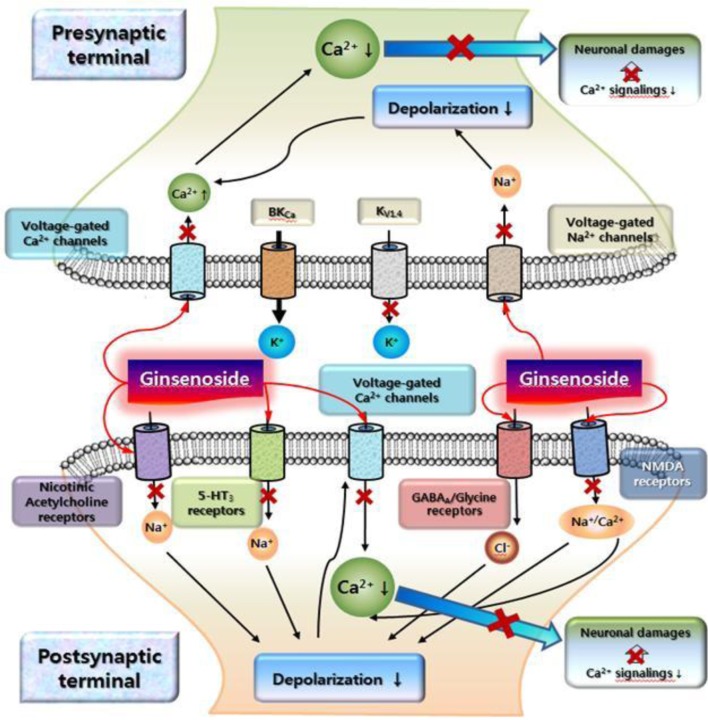Figure 5.
A schematic illustration on cytosolic Ca2+ overload signalings and ginsenoside-mediated attenuation against cytosolic Ca2+ overload. This schematic drawing shows that cytosolic Ca2+ levels could be elevated in ischemic or traumatic brain injury. The elevation of cytosolic Ca2+ levels occurs either via direct activation of voltage-gated Ca2+ channels or via depolarization caused by voltage-dependent Na+ channel activation and other excitatory ligand-gated ion channels at pre- and post-synaptic sites. The overload of cytosolic Ca2+ levels caused by excitatory neurotransmitters or neurotoxins may initiate the persistent activation of Ca2+-dependent signaling, resulting in damage, for instance through apoptosis or necrosis. Although ginsenoside has no effects on ion channels and ligand-gated ion channels at rest state of neurons, ginsenoside might exhibit its effects by attenuation of cytosolic Ca2+ elevation by abnormal conditions by inhibiting ion channels and receptors (as indicated with “x” in arrow). The detailed explanations were described in text. Ginsenoside exhibits differential regulations on subsets of K+ channels. So, one possible hypothesis is that K+ channels regulated by ginsenoside might play a balancing role on Ca2+ and Na+ channel inhibitions by ginsenoside.

